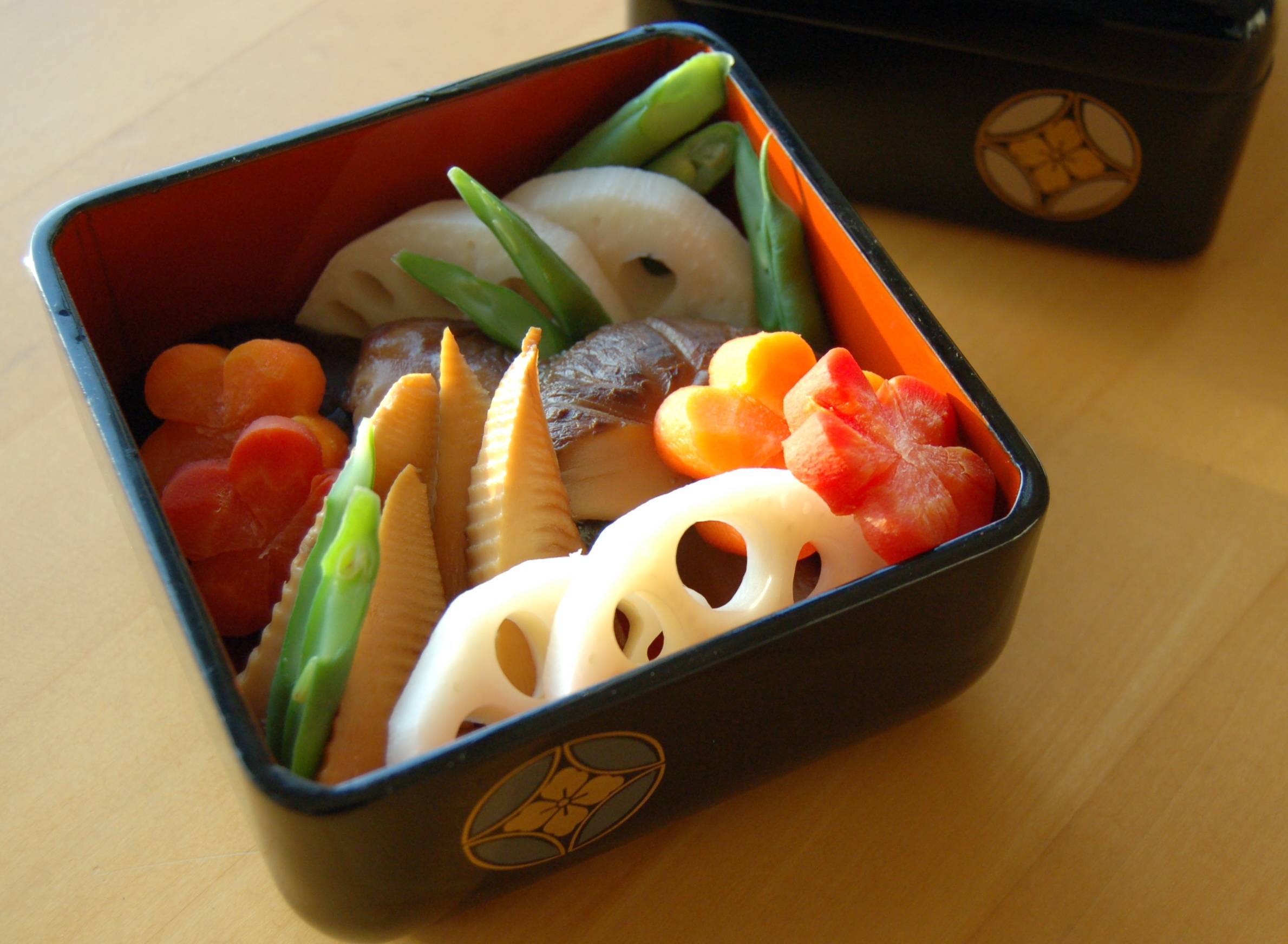A seasonal sensibility known as “kisetsukan” permeates Japanese food culture. The choice of what to serve, and how to present it, is closely linked to the cycle of the seasons and cultural symbolism.
Many of the seasonal motifs used to enhance the dining experience are inspired by nature. An ordinary carrot can evoke autumn when carved to resemble a maple leaf. The same carrot can conjure up wintertime, and the new year holidays, when beveled to look like a plum blossom.
Plum, bamboo and pine are known throughout most Asian cultures as “sai kan no san yū” (the three friends of winter). Originating in China where these hardy botanicals symbolize resilience and resolve, they entered the Japanese lexicon in the Heian Period (794-1185 AD). In Japan the three friends of winter are known as “shō chiku bai” (pine, bamboo, plum): Evergreen pine connotes steadfastness, bamboo suggests both strength and flexibility, while plum blossoms unfurling on snow-laden branches imply hardiness. Combined, this trio is emblematic of Japanese new year.



